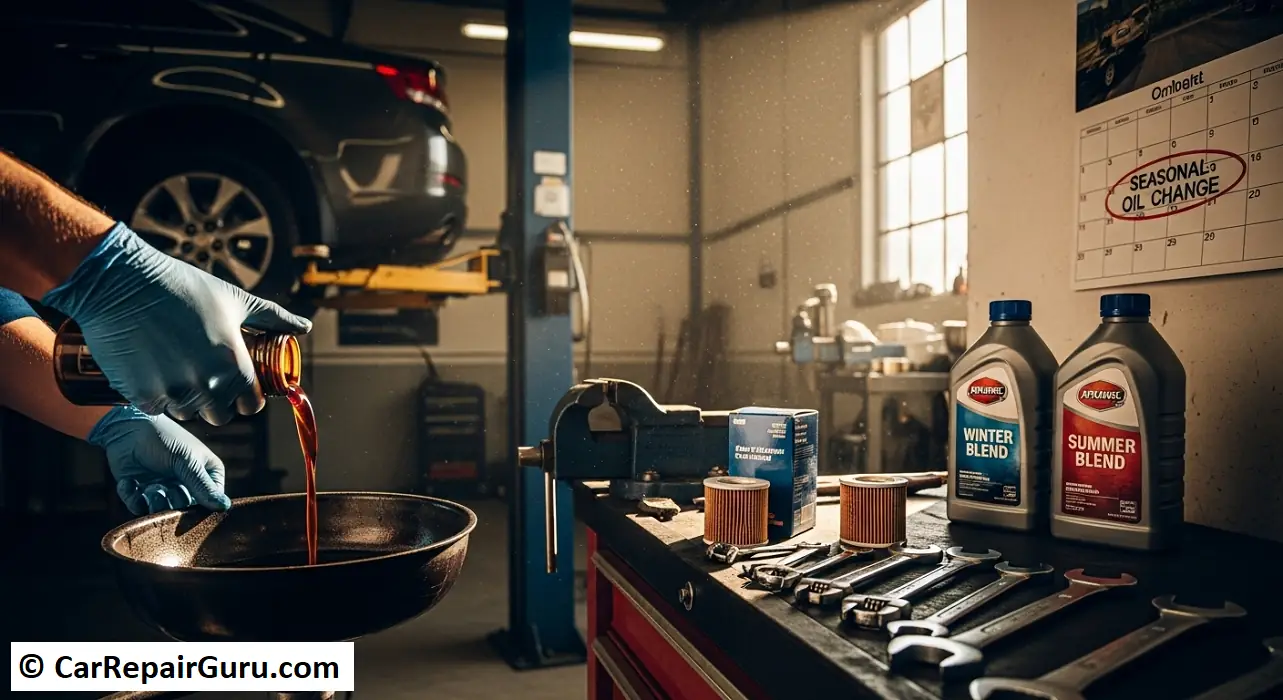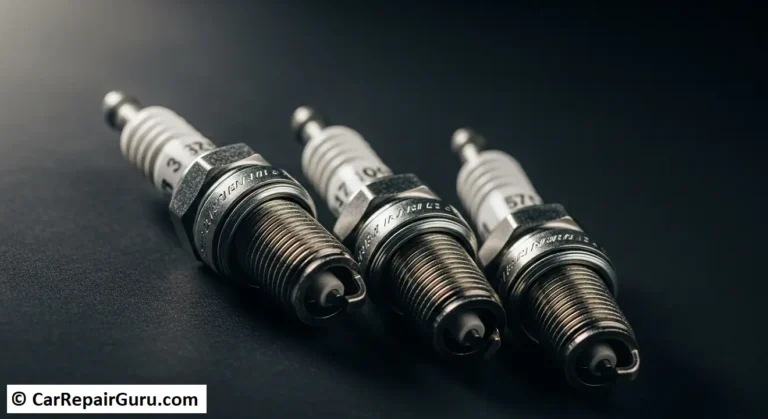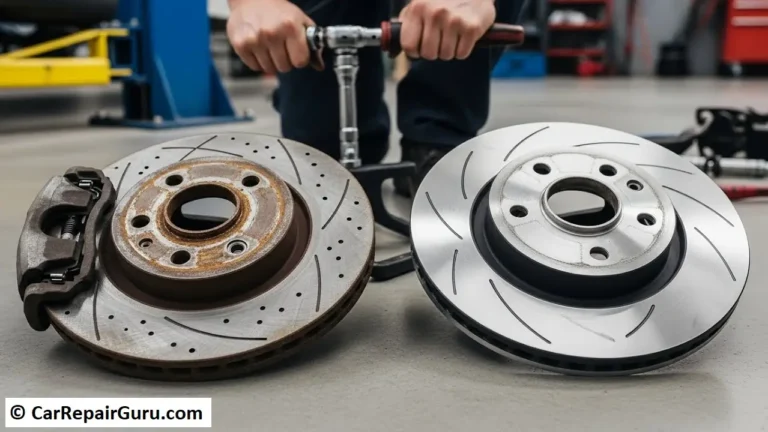
As the seasons turn, you probably have a checklist. You swap out your wardrobe, prep your garden, and adjust the thermostat. But have you thought about what the changing weather means for the most important fluid in your car?
Extreme temperatures, from a freezing January morning to a scorching August afternoon, put immense stress on your vehicle’s engine. The motor oil that keeps things running smoothly in mild weather might be struggling when the temperatures plummet or soar.
This isn’t just a mechanic’s upsell—a seasonal oil change is one of the smartest, most cost-effective pieces of preventative maintenance you can perform. It’s a critical step to ensure peak performance, improve fuel efficiency, and guarantee long-term engine protection.
This guide will break down exactly why your engine cares so much about the weather and how you can prepare it for anything the seasons throw your way.
Why Your Engine Cares About the Weather
Before we dive into seasons, let’s talk about the single most important property of your motor oil: viscosity.
In simple terms, oil viscosity is a measure of its thickness or resistance to flow. Think of it like this:
- Cold Honey: When you pull honey from the refrigerator, it’s thick and pours very slowly.
- Warm Honey: When you heat that same honey, it becomes thin and runny.
Motor oil behaves in the same way. The challenge is that your engine needs the oil to be thin enough to flow instantly on a cold start but thick enough to protect components when it’s running at over 200°F.
This is what the numbers on a bottle of oil (like 5W-30) mean. The first number followed by a “W” (5W) indicates its viscosity in the winter (cold). The lower this number, the better it flows when frozen. The second number (30) indicates its viscosity at high operating temperatures.
The goal of a seasonal oil change is to ensure your engine has oil with the perfect viscosity for the upcoming weather extremes.
Why a Cold-Weather Oil Change is Non-Negotiable
Winter is brutally tough on your engine, and most of the damage happens within the first few seconds of starting your car.
The Challenge of Cold Starts
When your car sits overnight in freezing temperatures, its oil thickens significantly. When you turn the key, the oil pump has to work incredibly hard to force that cold, sludgy oil through the engine’s narrow passages.
For several critical seconds, vital components like your camshafts, pistons, and bearings are grinding against each other with inadequate lubrication. This is where the vast majority of lifetime engine wear occurs. A single cold start in the winter can cause as much wear as hundreds of miles of warm driving.
The Solution – Switching to a Thinner “Winter” Oil
This is where a winter oil change becomes your engine’s hero. By switching to an oil with a lower “W” rating (for example, moving from 10W-30 to 5W-30, if your manufacturer approves it), you ensure the oil stays more fluid in the cold.
Benefits of the right winter oil include:
- Instant Lubrication: Thinner oil flows immediately, protecting engine parts from that initial startup friction.
- Less Battery Strain: Your starter motor and battery don’t have to struggle as hard to turn over a cold engine with thick oil.
- Better Fuel Economy: A freely moving engine is an efficient engine. Reducing internal drag from thick oil helps you save money on gas.
The Importance of a Summer Oil Change

Just as cold is an enemy, so is extreme heat. Summer brings its own set of challenges that can wreak havoc on your motor oil.
The Danger of High Temperatures and Thermal Breakdown
Intense summer heat, combined with your engine’s own operating temperature, can cause motor oil to thin out too much and lead to something called thermal breakdown. This is when the oil’s molecular structure is literally cooked apart, permanently losing its ability to lubricate.
When oil breaks down, it can’t maintain a strong protective film between moving parts. This leads to:
- Increased Friction and Engine Wear: Metal grinds on metal, accelerating wear and tear.
- Engine Overheating: One of oil’s jobs is to carry heat away from the engine. Broken-down oil can’t do this effectively.
- Engine Sludge: The destroyed oil molecules can clump together, forming a thick, tar-like substance that clogs oil passages and starves the engine of lubrication.
The Solution – The Right Oil for a Hot Engine
A summer oil change ensures your engine is filled with fresh oil that has the correct viscosity and a robust additive package to resist thermal breakdown. This is especially important if you engage in typical summer activities like towing a trailer, hauling heavy loads, or getting stuck in stop-and-go vacation traffic—all of which are considered severe driving conditions that generate extreme engine heat.
How Your Driving Habits Interact with the Seasons
It’s not just about the outside temperature; it’s about how your driving style magnifies the seasonal challenges.
Winter’s Challenge – Short Trips and Condensation
Do you often make quick trips to the store or work that are less than 15 minutes long? In the winter, this short trip driving is particularly damaging. Your engine doesn’t run long enough to reach a temperature that can burn off moisture (condensation) that naturally forms inside.
This water mixes with your oil, creating a milky, corrosive sludge. This sludge doesn’t lubricate well and can block oil flow. A pre-winter oil change with fresh oil and a new filter is the best defense against this sludge formation.
Summer’s Stress – Towing, Hauling, and Stop-and-Go Traffic
As mentioned, summer often means putting your vehicle under heavy load. Towing a boat, loading up the SUV for a camping trip, or crawling through beach traffic all dramatically increase engine temperatures. These activities push your oil to its limit. If the oil is already old and partially broken down, a hot day of heavy use could be the final straw, leading to overheating and accelerated wear.
Synthetic vs. Conventional – What’s Best for the Seasons?
The type of oil you choose plays a huge role in seasonal protection.
- Conventional Oil: This is refined from crude oil. It does a good job under normal conditions but is more susceptible to the extremes. It thickens more in the cold and breaks down faster in high heat.
- Synthetic Oil: This is scientifically engineered in a lab for superior performance. Full synthetic oil molecules are uniform and pure, allowing them to flow freely at temperatures far below freezing while remaining incredibly stable and resistant to thermal breakdown in extreme heat.
The Verdict: While conventional oil is fine for some vehicles in mild climates, synthetic oil is the clear winner for all-season protection. If you live anywhere with hot summers and cold winters, the extra cost of synthetic is a wise investment in your engine’s longevity.
Warning Signs – Is Your Oil Struggling with the Season?
Your car will often give you clues that its oil isn’t up to the task. Keep an eye (and ear) out for these signs.
- Unusual Engine Noises: A loud ticking or tapping sound for a few seconds after a cold start can mean the oil is too thick. A general, louder-than-usual engine drone when hot can mean the oil has thinned out too much.
- Dashboard Lights: The oil pressure or check engine light is a serious warning. It could mean your oil is too thick to pump or too thin to maintain pressure. Pull over safely and have it checked immediately.
- Check the Dipstick: If your oil is excessively dark, feels gritty between your fingers, or has a burnt smell, it has broken down and needs to be changed right away.
The Long-Term Benefits – Saving Money and Your Engine
A seasonal oil change isn’t an expense; it’s an investment with a fantastic return.
- Better Fuel Economy: A properly lubricated engine runs with less friction, which means it uses less fuel. Over a season, those savings add up at the pump.
- Preventing Catastrophic Repairs: A $70 oil change is cheap insurance against a $5,000 engine replacement caused by engine sludge or lubrication failure. It’s the definition of preventative maintenance.
- Boosting Resale Value: A vehicle with a documented history of regular, proactive car maintenance is far more attractive to a potential buyer and can command a higher price.
Expert Tips for Your Seasonal Oil Change

Ready to get started? Here are some quick, actionable tips.
Tips for When to Get Your Oil Changed
- Time It Before the Extremes: Schedule your “winter” oil change in late fall and your “summer” change in late spring to prepare your engine before the harsh weather hits.
- The “Two-Per-Year” Rule: If you drive an average number of miles, plan to have your two annual oil changes align with the changing seasons (e.g., in May and November).
- Prioritize Mileage: Always follow your manufacturer’s recommended mileage interval first. If you hit your mileage marker mid-season, don’t wait—get it changed.
Tips for Choosing the Right Oil
- Consult Your Owner’s Manual: This is your #1 resource. It will specify the correct oil viscosity for your vehicle.
- Go with a Lower “W” for Winter: A lower “W” number (like 5W-30 vs. 10W-30) ensures better oil flow on freezing mornings.
- Invest in Full Synthetic: For the ultimate year-round protection, especially in climates with extreme temperature swings, full synthetic oil is the best choice.
A Small Step for Big Engine Protection
Your car’s engine is a complex machine operating under incredible force and temperature. Its only defense is a thin film of oil. By ensuring that oil is optimized for the season, you are taking a simple, proactive step that pays huge dividends in reliability, performance, and longevity.
Don’t let your engine fight a losing battle against the weather. Be smart, be prepared, and give your car the protection it needs to perform its best, no matter what the forecast says.
Frequently Asked Questions (FAQ)
Do I really need a seasonal oil change with a modern car and synthetic oil?
Yes, it’s still a highly recommended strategy. While modern synthetic oil offers fantastic protection across a wide range of temperatures, it isn’t invincible. A seasonal oil change ensures your engine has fresh oil to handle the specific stress of extreme heat or cold. Think of it as affordable preventative maintenance that guarantees your engine has the best possible defense against wear and tear.
When is the best time to get a seasonal oil change?
The key is to be proactive, not reactive. The ideal time for a “winter” oil change is in mid-to-late fall, before the first deep freeze. For a “summer” oil change, schedule it in mid-to-late spring, before the peak heat and humidity arrive. This prepares your engine ahead of time for the stressful months.
What type of oil is best for winter vs. summer?
Always start by checking your owner’s manual, as it lists the manufacturer’s approved oil viscosities. For winter, an oil with a lower “W” number (like 5W-30) is generally better because it flows more easily in the cold for quicker engine protection on startups. For all-season protection, especially in areas with harsh weather, a high-quality full synthetic oil is the best choice as it resists both thickening in the cold and breaking down in the heat.
Should I follow my car’s oil life monitor or the season?
You should follow both. Your car’s oil life monitor tracks mileage, engine revolutions, and temperature to estimate when the oil is degrading. You should always change your oil when the monitor indicates it’s time. The seasonal strategy is to simply align one of those necessary changes with the beginning of a new season to give your engine the freshest oil right when it needs it most.
Is a seasonal oil change different from a regular oil change?
The service itself is the same—it’s a standard oil and filter change. The “seasonal” part refers to the timing and strategy of the service. It’s about consciously scheduling one of your regular oil changes to happen right before winter or summer begins, and potentially choosing a specific oil viscosity (from your manual’s approved list) that is best suited for those upcoming temperature extremes.






